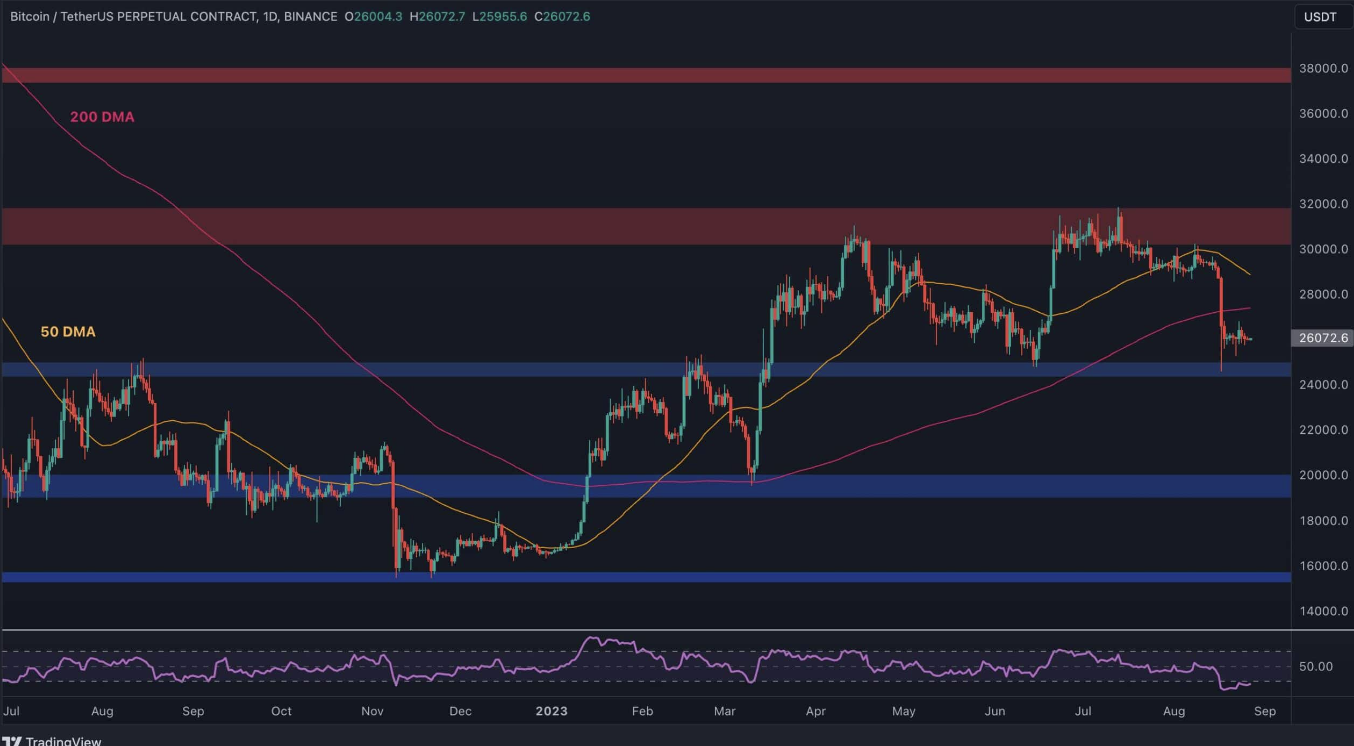The leading cryptocurrency Bitcoin (BTC) seems to be far from the $30,000 level at the moment, which is considered as a distant memory. BTC has transitioned from the days of testing the $32,000 resistance to testing the $26,000 resistance. However, the possibility of a correction for the BTC price is not completely over, and the potential for both downward and upward movement of the price is noteworthy.
BTC Price Analysis
Looking at the BTC chart from a daily perspective, the consolidation that has been ongoing for the past few days is evident. BTC, which experienced a drop from the critical resistance level of $30,000, is currently below the 200-day moving average, and negative indicators continue one after another. This situation is known as a clear trend reversal and a signal of decline.
In addition, the RSI also gives a similar signal, indicating that the decline will continue in the short term. Although it seems likely that the point of the 200-day moving average will be retested, this test may not have any meaning without volume.

Looking at the BTC price chart, a sharp drop to $20,000 is highlighted in the coming weeks. When looking at the 4-hour timeframe, it can be seen that the price will fluctuate between $27,500 and $25,000 levels, and as long as it does not rise above $27,500, $20,000 could become the new support. If the opposite happens and the price rises above the $27,500 level, as expected, $30,000 will be tested.
However, considering the market structure and conditions, reaching $27,500 seems very difficult, and the $25,000 support is currently more critical than ever.
The BTC price is currently far from $30,000, and SOPR, RSI, and the overall market situation are the biggest evidence of this. The $25,000 level for BTC should be closely monitored and action should be taken according to the direction drawn as soon as the consolidation ends. There has also been a decrease of more than 20% in the trading volume of the cryptocurrency market in recent weeks, and all of these are known as signs of a decline after consolidation.

 Türkçe
Türkçe Español
Español










